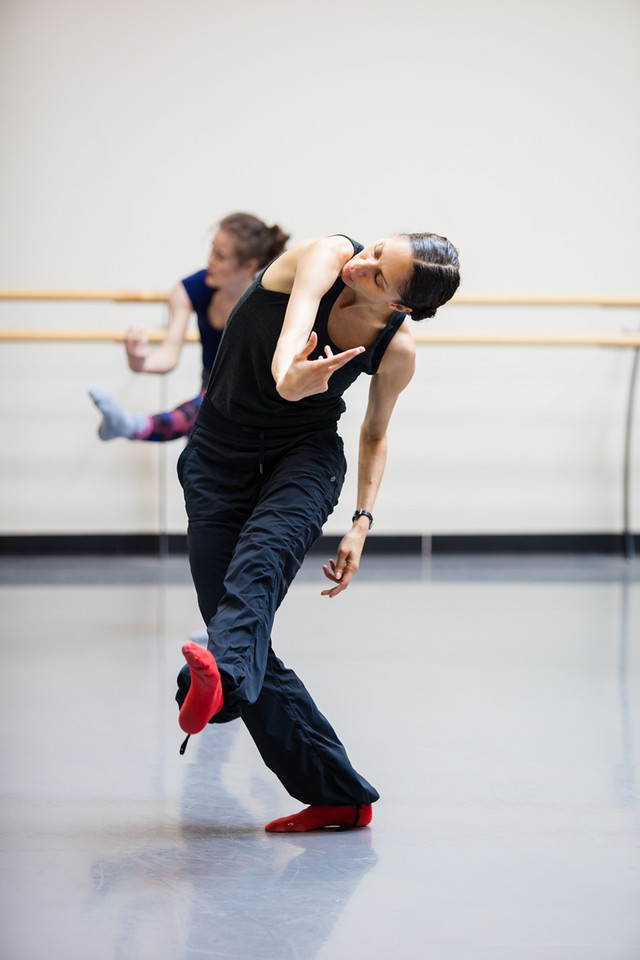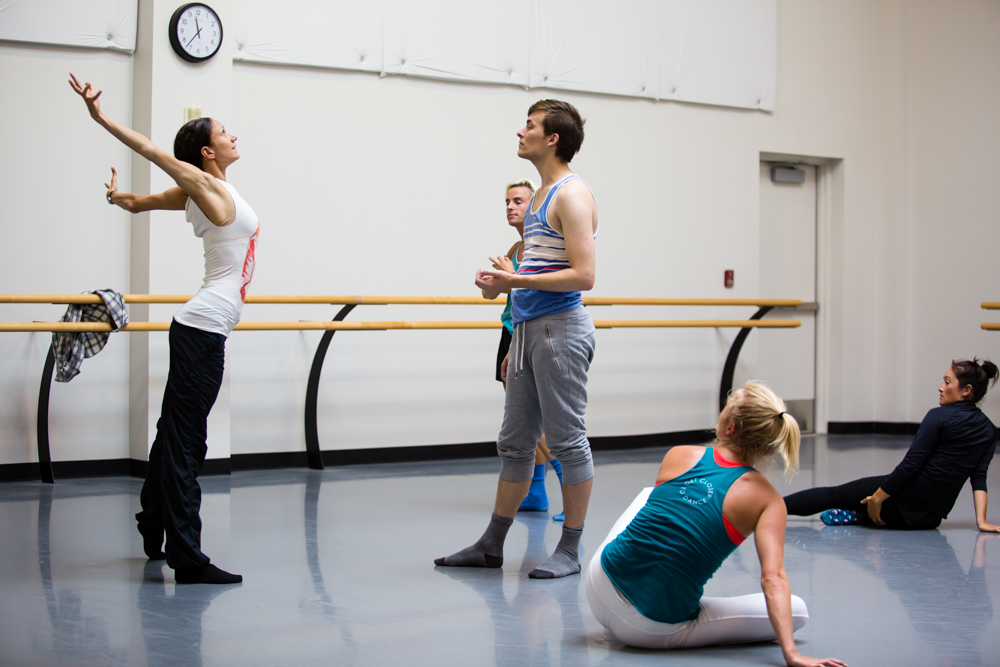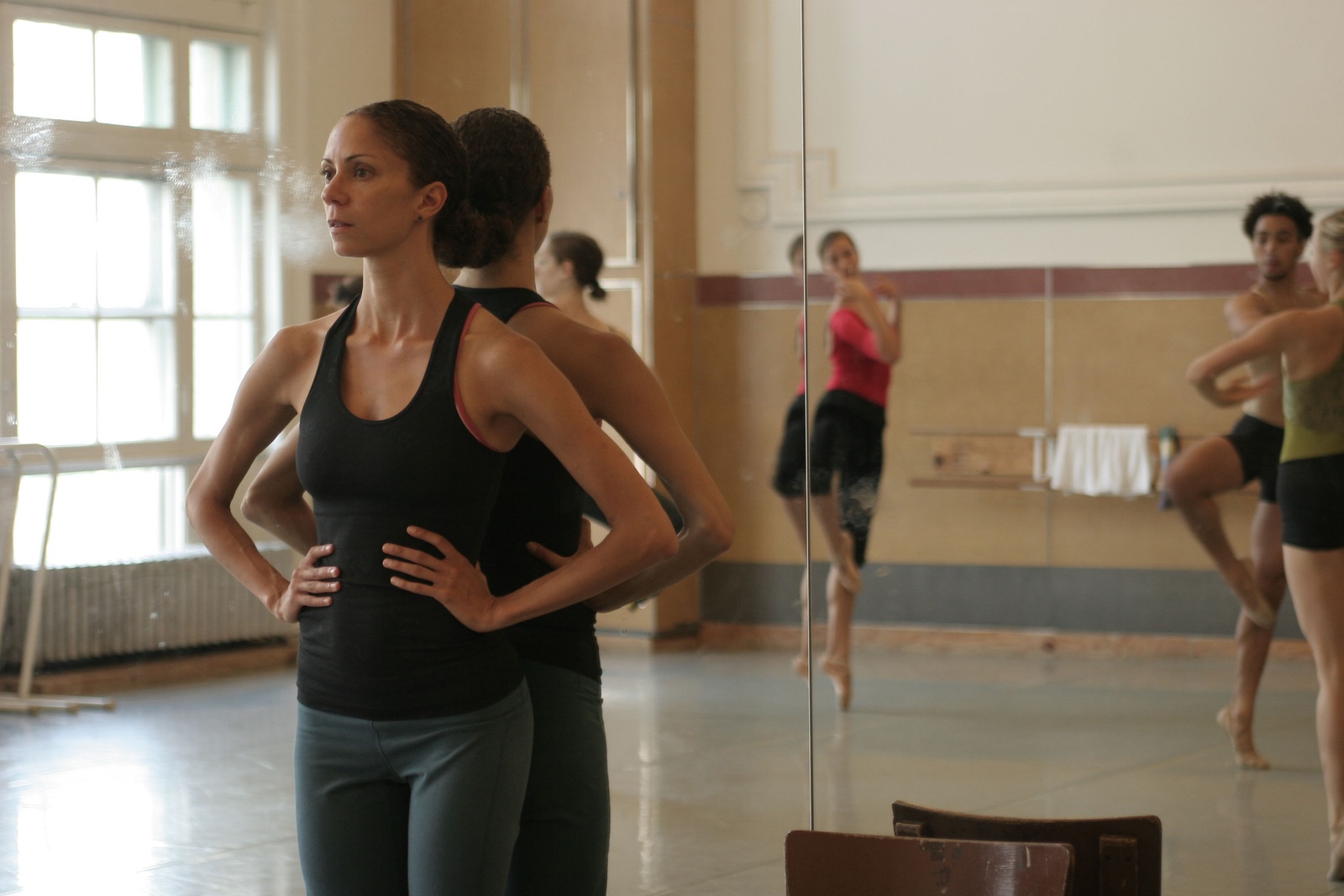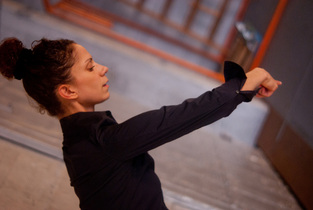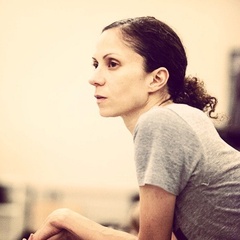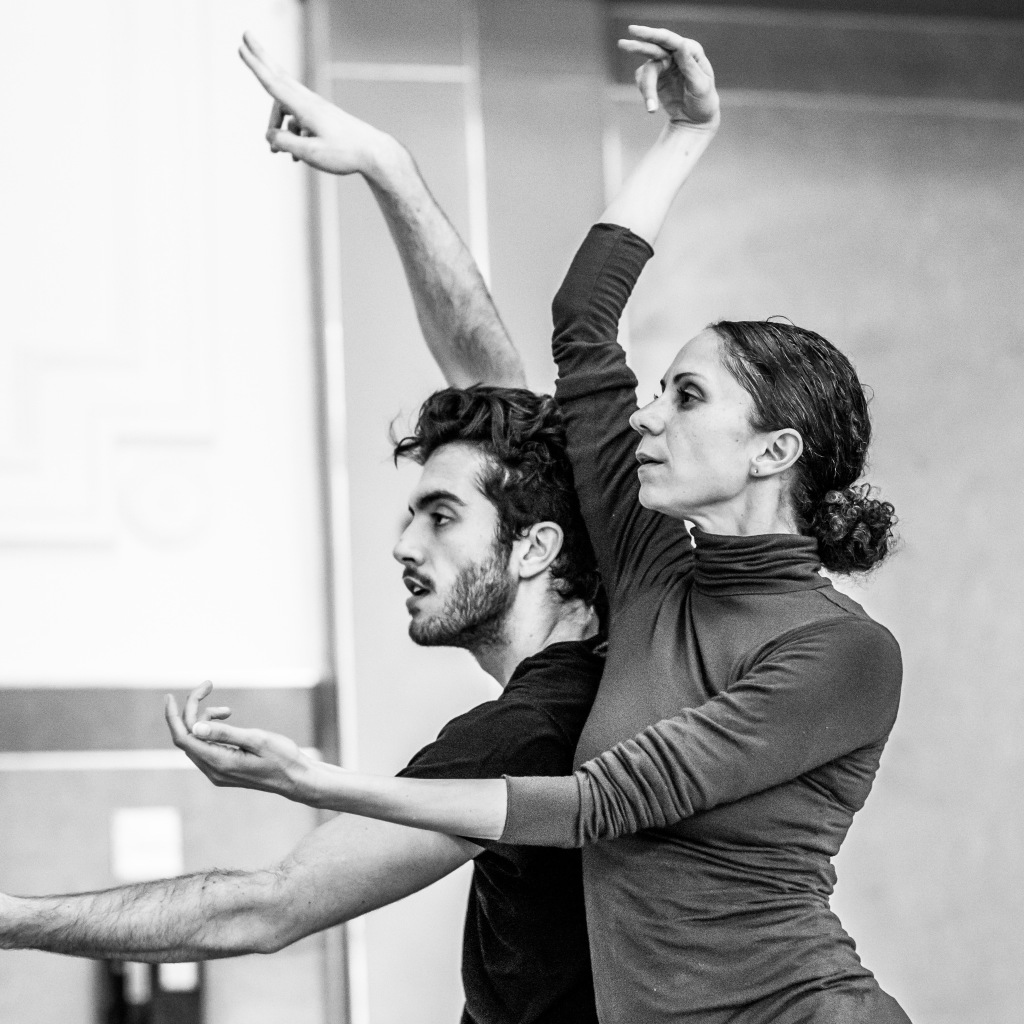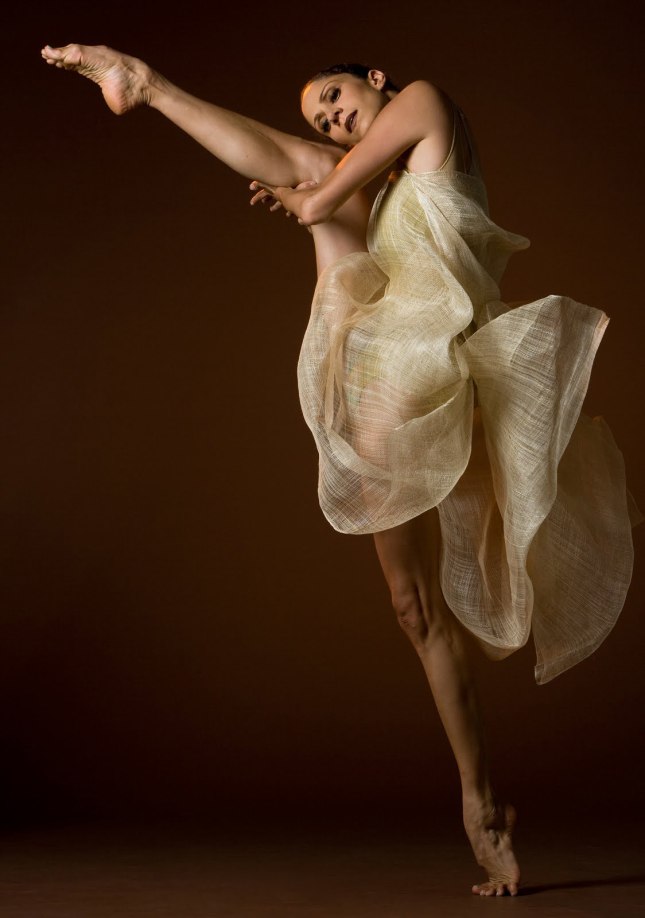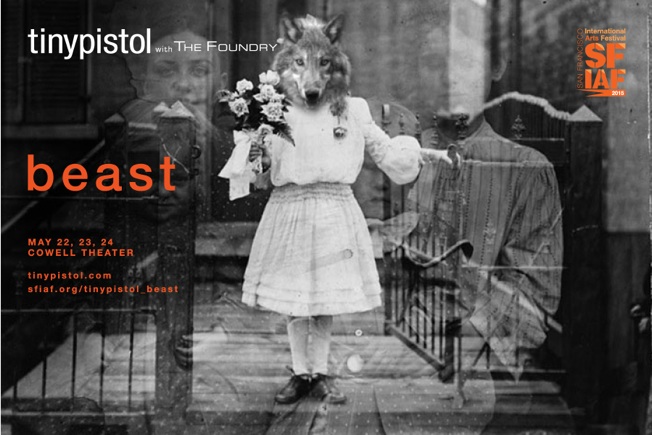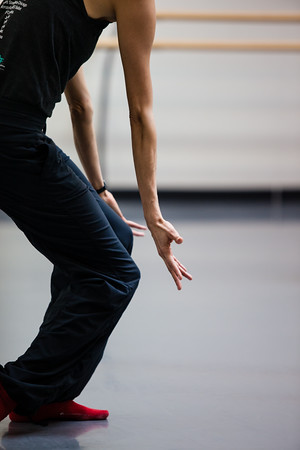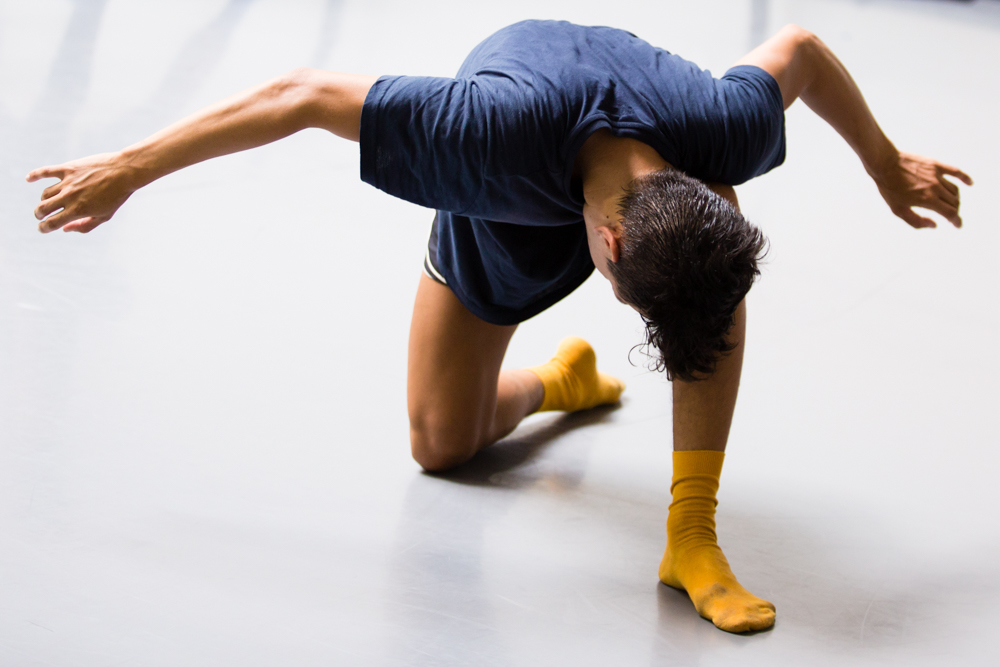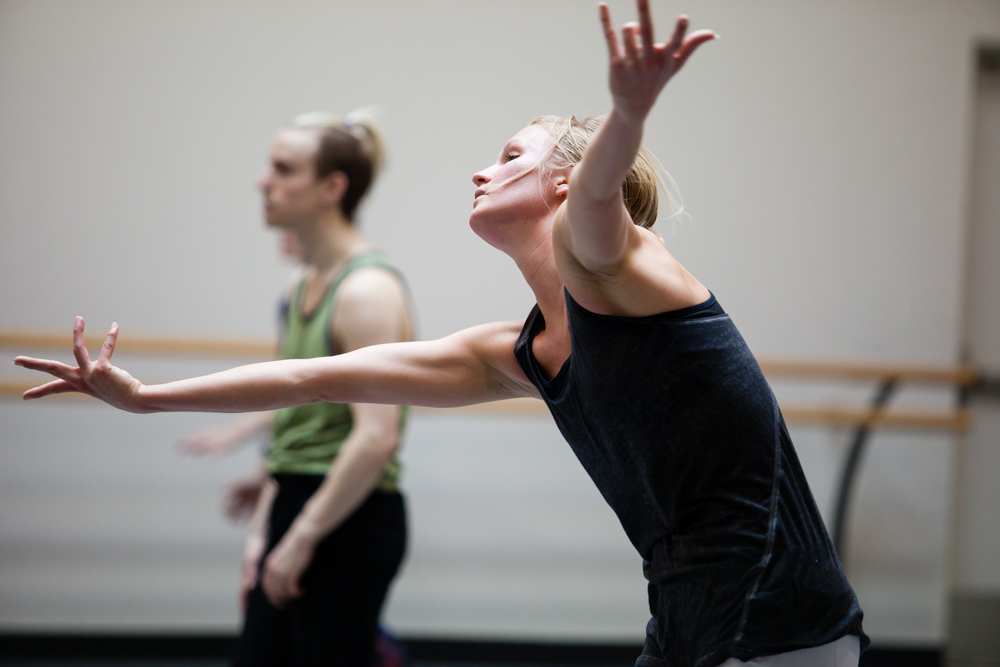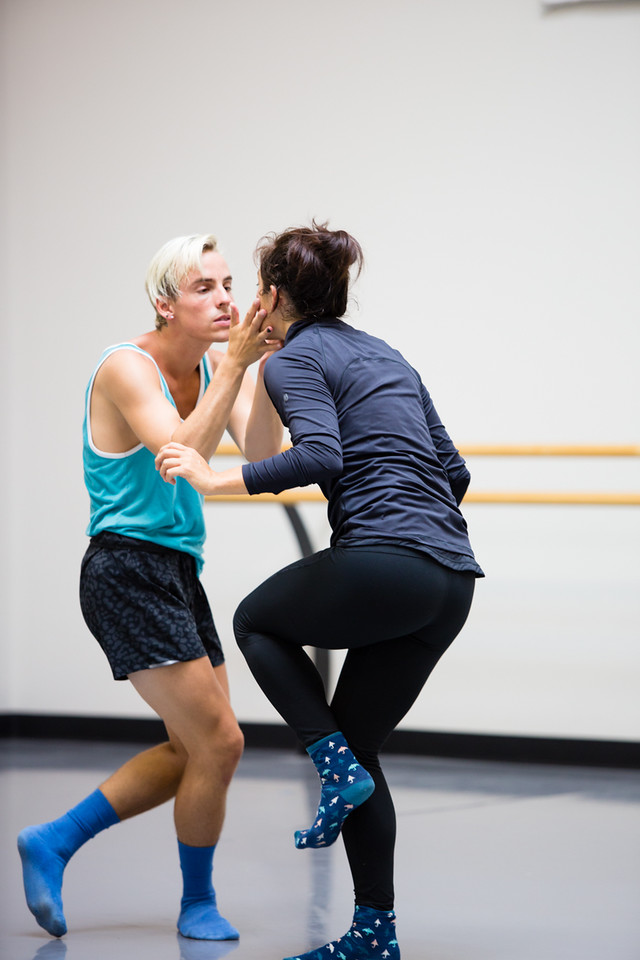“I’ll never do that again!” exclaims San Francisco-based Maurya Kerr with a rueful grin, referring to the almost 5-month hiatus between the initial working out of her latest piece last March and this week’s resumption of rehearsals. Her first creation for Whim W’Him will premiere on September 11, 2015 at the Erickson Theater on Capitol Hill as part of the Choreographic Shindig program, all 3 of whose choreographers were chosen by Whim W’Him’s 7 dancers.

Maurya is, “in a totally different place now” than last spring. It’s been an unusually concentrated and intense time for her since her initial contact with Whim W’Him. She choreographed 3 pieces—for the students of LINES Ballet Training Program, for her own company, and a collaboration with two other choreographers for Axis Dance Company. She was also in graduate school at Hollins University. In addition, ODC Theater in San Francisco awarded her a 3-year residency. “I need to challenge myself differently than in March,” she says, “go in a different direction.” And so she finds herself essentially “creating a new piece in a week.”
When I asked about the dancers’ reaction to such major changes, she smiled. Though she’d had some trepidations, “It’s okay with them. They are excited to do new material.” From what I’ve seen in rehearsal so far, the dancers are as focused as Maurya on taking in her style and vocabulary, learning a good many new sequences, and refashioning whatever is being retained from before to fit into a totally different context.
The rapt concentration in the studio is indicative both of the dancers’ commitment to this program that originated with them and to the choreographer’s own curiosity, restless intensity and eagerness to challenge herself. Maurya has a questing and questioning mind. Her open willingness to cast off basic assumptions about life and art, or to reconfigure them into something altogether different, is an important touchstone of her dance career.
Take her traditional training and upbringing, and then what came later. Endowed with a great love of ballet, the right body, talent and mind-set, supportive parents, and early success—Maurya was the first child Clara in the Pacific Northwest Ballet Maurice Sendak-designed Nutcracker that retired this past winter—”I never really made a choice,” she says. It was just what she did.
After completing PNB’s school and a 1-1/2 year stint of dancing in the company, followed by 3-1/2 years at Fort Worth Ballet, she encountered a novel approach to dance when she joined Alonzo King LINES Ballet in San Francisco. “It was my first exposure to something else—scary, overwhelming, exciting, and welcome to have different expectations. In other companies, expectations are that you’ll be pretty and conforming. Alonzo wasn’t interested in my remaining simply pretty. He wants artists to make their own choices. A ginormous shift, but welcome. My body and spirit were looking for it without knowing.”
Slowly, not all at once, Maurya began going to see the different kinds of dance that came through San Francisco and discovered other arts. Now she watches a lot of dance, calling herself a “voracious observer of the arts,” but adds, “It’s hard as a dancer, though. You’re so tired all the time. Dance, eat, sleep. Enormous fatigue.”
As Maurya’s world widened she became aware of the narrowness of the assumptions about life, bodies, and art that her training in classical ballet had ingrained in her. Gradually she turned against the “inhibited, sanitized, and sexualized” roles women are cast in by both ballet and society. She also became more and more aware of and incensed by how routinely the voices of people of color are ignored.
Her sense of what she wanted to say and the means that were needed to do it took a sharp turn. “I am a fan of showing what real life is like,” she says, “the complications.” Maurya objects to the “common juvenile prurience afforded to intimacy, the commercialized stand on love, and unrealistic representations we too often see in dance.” And she adds, “So little to do with selves. This doesn’t resonate with many people. It’s very ‘othering’ and alienating.”
The influence of her background in classical ballet is still evident in Maurya’s attention to detail and dedication to her art. It helped form her identity and provided “something to resist—I am super grateful to it.” Most of her dancers have a strong ballet training and she says she owes it “discipline and high expectations of the body. But aesthetically I pretty much reject everything about it.”
After dancing with LINES for 12 years, a series of injuries stopped Maurya’s dancing career. A year later, she began choreographing. Although not a replacement for dancing, it offered many new possibilities. When she founded her own company, tinypistol, in 2010, she had already made a number of pieces for the various LINES educational programs. “I was very lucky for the opportunity to build my chops on that,” she says, “working with amazing dancers” and developing material that could be used as basis for tinypistol pieces. The name of her company came to Maurya before she even thought she would have one, but it suited exactly: two small, huddled together, insouciant-sounding words that actually are alive with miniscule menace: lethal diminutiveness.
Maurya is, as she says, “a fan of extremities,” and her art “tends to darkness.” She quotes Oscar Wilde: “The ugly can be beautiful. The pretty never.” The motto of tinypistol is “anti-pretty.” Andrea Pflaumer noted in the San Francisco Examiner that a recent offering, beast, “refers to a different kind of beauty – that inspired by the animal world. Her goal is to open understanding into the deeper beauty found in humans’ animal nature. She says, “I watch animals a lot and they are incredibly beautiful and profound. I found deep truth in and connection with them.”” Maurya told Kenna Tuski writing for the DancePulp blog, “I adore hard work and am attracted to dancers who have a relentless work ethic motivated by curiosity, joy, humility, and gratitude. I love being in process with artists who can access their complexities and animal natures.”
Maurya’s courage to slough off earlier ideas and make dance that pushes herself, her dancers and her audiences is evident in her willingness to scrap previous notions of her piece for Shindig. The proposal she sent to the Whim W’Him dancers, and artistic director Olivier Wevers was to make “solos and duets for very specific and delimited audiences—for a dying woman or a caged lion or a tree about to be cut down.”
“The original idea for the piece,” Maurya wrote to Whim W’Him executive director, Katie Bombico “centered around ideas of choreographing for a specific audience. I drew my inspiration from true examples: an artist drawing a tiny painting for ants every day for a year, musicians playing concerts for herds of cows, and dance artists staging performances for intimate audiences of one. Based on my imaginings of what a particular audience member needs to witness, the episodic work will offer them a panacea, a confrontation, a reminder, proof of worth, the erasure of regret….”
But the notion of “episodic” work is no longer enough. Maurya says she has been doing it already and wants to make a piece that has a bigger context with music going through the whole piece. Less a series of stories than a novel with characters, themes and plot-lines interconnected.
And her new idea? “All my stuff is on intimacy and distance, connectivity. There will be a lot of invitation, allowing the body to be welcoming.” Its title is into the wide welcome. Some of her favorite parts from the earlier material—such as “the jail solo” for Mia Monteabaro, “who looks amazing in it”—just don’t fit any more. So she is starting something new for Mia and Jim and will try to hone it as much as possible before leaving. There is also duet for Tory Peil and Kyle Matthew Johnson that seems to vibrate between a loving embrace and a sort of duel. But there are several group sections now as well, one a rhythmic diagonal sequence for all 7 dancers like waves rushing in and receding, another where the 3 women and the 4 men dance separately, never intermingling.
Maurya’s work is often angular, jagged, full of stretched arms, splayed hands, overt sexual gestures, unsettling juxtapositions. But she doesn’t come across in person as angry in any simple, single-dimensioned way. There is an interesting combination in Maurya of ferocity and humor, soft-spoken intensity, feminist rage, and measured, closely explicated ideas. When she works with the dancers, I have the feeling that she is not so much showing them steps that they then copy, as that she is using her long fingers to transmit the energy and intention of her movement directly into them to use in their own way, allowing them to be “creative dancers who have agency,” as she puts it.
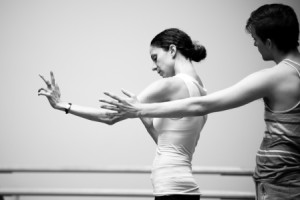
Their joint efforts, vibrant, full of mystery, and still very much a work-in-progress, will come to fruition exactly four weeks from today.
